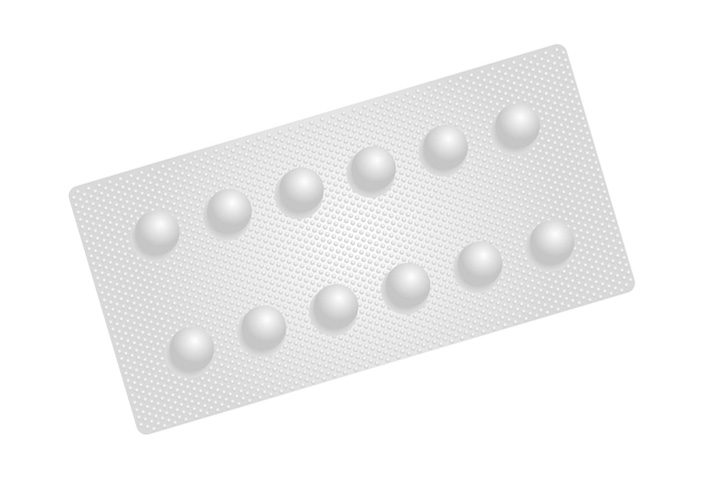Myambutol
Myambutol is an anti-tuberculosis drug containing ethambutol hydrochloride as the active ingredient. It is used in combination with other medicines to treat tuberculosis.
This drug blocks the reproduction of the bacteria responsible for the disease. This medicine is distributed to most organs, including the lungs.
What Does Myambutol Contain?

1 film-coated tablet of Myambutol contains:
Active ingredients
100 mg or 400 mg ethambutol hydrochloride.
Excipients
Sucrose, stearic acid, gelatine, liquid sorbitol (non-crystallisable), magnesium stearate, film: shellac (only in 100 mg tablet), hypromellose, titanium dioxide, sodium lauryl sulphate, light liquid paraffin, quinoline yellow (E 104), liquid paraffin.
Forms and Strengths
Myambutol 100 mg: packs of 100 film-coated tablets.
Myambutol 400 mg: packs of 100 film-coated tablets (scored).
Uses
Myambutol should only be used in combination with other medicines for the treatment of tuberculosis (tuberculostatics).
Medicament is taken in the morning as a single daily dose, e.g. with breakfast. It is important to take this drug every day without interruption in order to ensure that the treatment is effective and to avoid pronounced side effects.
It is up to your doctor to set the dosage according to the stage of the disease. As a general rule, it should not exceed 25 mg of ethambutol per kg of body weight.
In the event of renal insufficiency, your doctor will adjust the dosage accordingly.
In general, administration is not recommended in children under 13 years of age.
Antibiotic treatment should be continued for as long as prescribed by the doctor. The usual duration of treatment for tuberculosis is several months, and treatment should not be interrupted without medical advice. The symptoms of the disease often disappear before the infection is completely cured. This is why it is important to continue treatment after symptoms have disappeared. If the treatment is used for too short a period or stopped prematurely, the disease may flare up again.
Side Effects
Taking Myambutol may cause the following side effects:
Visual problems (reduced visual acuity, optic nerve disease, inflammation of the optic nerves, limitation of the visual field, loss of colour vision and blindness) are the main side effects observed with ethambutol. If detected early, these visual problems are reversible. Redness, skin rashes, itching, joint pain, fever, nausea, vomiting, lack of appetite, abdominal pain, dizziness, confusion, impaired orientation, hallucinations, rarely severe allergic reactions accompanied by, for example, breathing difficulties and dizziness, have also been reported. These may be accompanied, for example, by difficulty in breathing and dizziness, acute gout, disorders of the blood count, liver damage, sometimes with a lethal outcome, and neuritis with "tingling", burning sensations or weakness or numbness in the hands and feet.
Very common/frequent (may occur in 1 to 10 or more of every 100 patients): Paradoxical reaction. Recurrence or new onset of TB symptoms after initial improvement during treatment. Symptoms may include fever, swollen lymph nodes, shortness of breath, cough, headache, loss of appetite, weight loss or tiredness.
If you notice any side effects, please tell your doctor or pharmacist. This applies in particular to side effects not mentioned in this package leaflet.
Precautions
In order to detect any vision problems as early as possible, the doctor treating you (or the ophthalmologist informed of your treatment with Myambutol) will check your colour vision, visual field and visual acuity every 4 weeks.
Patients suffering from kidney failure will have their eyes checked once a week. These precautionary measures are designed to detect any visual problems before they become irreversible. As soon as they appear, the treating doctor will stop the treatment so that the problems can regress.
In a few cases where vision problems were detected a year late, irreversible damage has been reported. Experience in children under 13 years of age is limited. Regular eye examinations should be carried out, especially in young children for whom objective examinations are difficult to obtain.
As with other potent drugs, renal function, liver function and blood counts should be monitored before and during treatment. A reduction in the elimination of urates such as uric acid may trigger an acute gout attack.
Gastric antacids weaken the efficacy of Myambutol. For this reason, this antibiotic should be taken at least 1 hour before a medicine to treat gastric hyperacidity.
If you are taking a contraceptive (pill), bear in mind that its effectiveness may be reduced during treatment with Myambutol. Your doctor or pharmacist may therefore recommend other contraceptive measures.
Tell your doctor or pharmacist if you are taking neurotoxic drugs at the same time (e.g. disulfiram).
Myambutol may reduce visual acuity and colour vision and cause possible side effects such as orientation problems and dizziness. As a result, the ability to drive or use tools or machinery may be impaired.
Taking Myambutol may induce alcohol intolerance.
Paradoxical reaction
Myambutol is likely to trigger paradoxical reactions manifested by a worsening of symptoms or a recurrence of tuberculosis between 2 weeks and up to 18 months after the start of treatment with Myambutol. If you experience symptoms such as cough, shortness of breath, fever, swollen lymph nodes, tiredness, headache, loss of appetite, weight loss or weakness, please consult your doctor immediately.
Myambutol contains sucrose. If your doctor has told you that you are intolerant to certain sugars, contact your doctor before taking this medicine.
This drug contains 4 mg of sorbitol per 100 mg film-coated tablet and 16 mg of sorbitol per 400 mg film-coated tablet.
What else do you need to consider?
This medicine has been prescribed for you by your doctor to treat the illness you are currently suffering from.
The antibiotic contained in Myambutol is not active against all the micro-organisms responsible for infectious diseases. Using the wrong antibiotic or the wrong dose can lead to complications. So never use it on your own to treat other illnesses or other people.
When should Myambutol not be used?
Drug should not be taken:
- if you have optic nerve damage or pre-existing eye disease;
- if you are hypersensitive (allergic) to any of the ingredients of the medicine (active substance or excipient). Hypersensitivity can lead to asthma, respiratory distress, circulatory problems, swelling of the skin (e.g. urticaria) and mucous membranes or skin rashes.
Pregnancy and Breastfeeding
Pregnant women or mothers breast-feeding their babies should not take this medicine.



